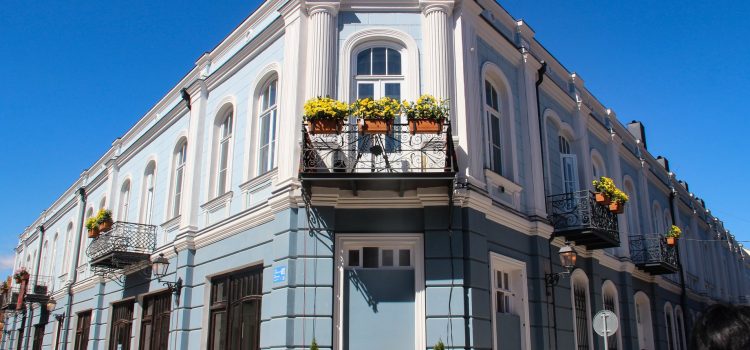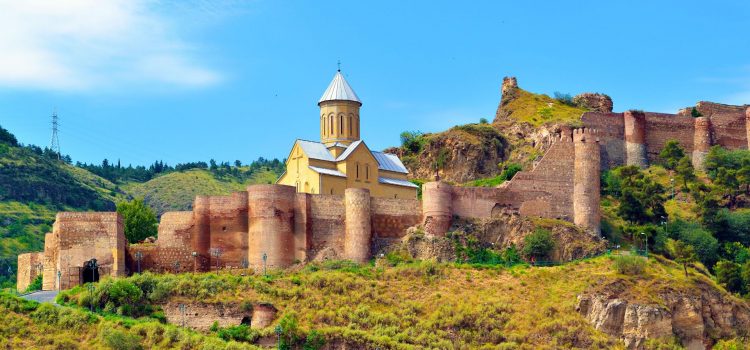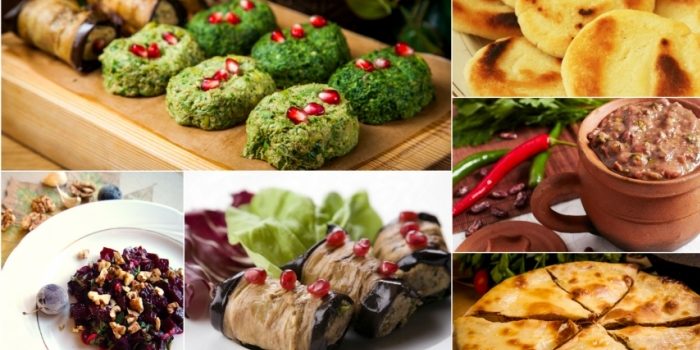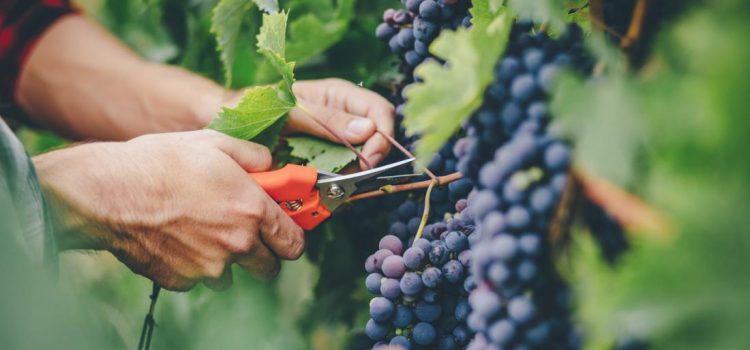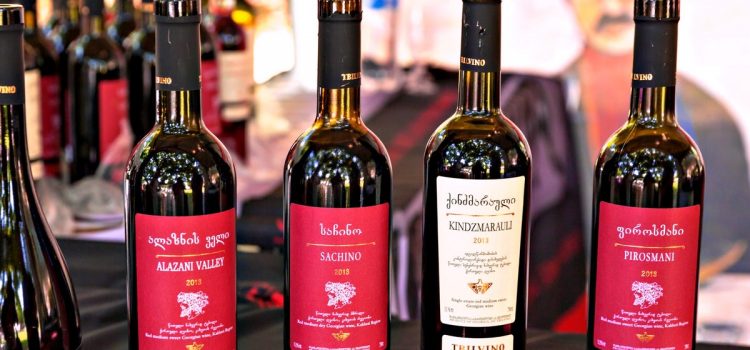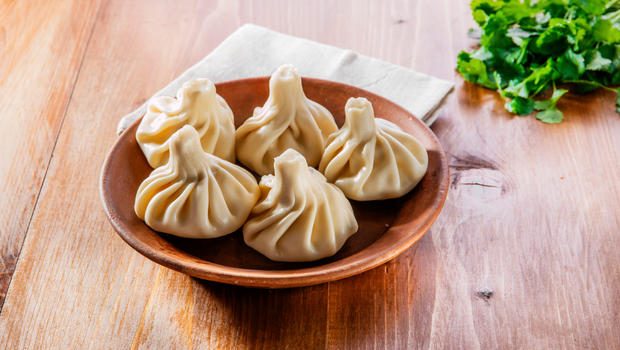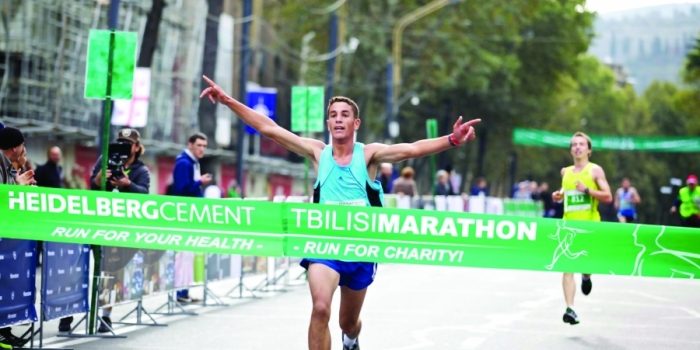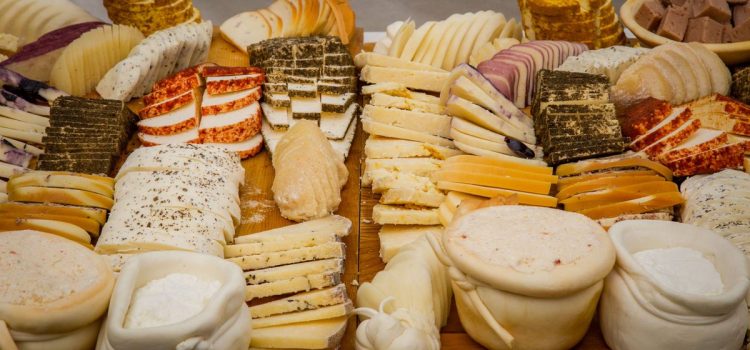Georgia must see place: David Aghmashenebeli Avenue
There are many must see places in Tbilisi, but now we want to speak about David Agmashenebeli Avenue
It’s one of the main avenues in the historical part of Tbilisi, known for its 19th-century classical architecture. The avenue is located on the left bank of the Mtkvari river, and runs from Saarcbruken, Square to Giorgi Tsabadze street. Currently named after David |V of Georgia, it was originally called Mikheil Street in 1851, and Plekhanov Street after the Russian revolutionary George Plekhanov, from 1918 to 1988.
Since 2010, the avenue has seen major rehabilitation works, which includes the renovation of seventy buildings, as well as the road, sidewalks and street lighting.
Agmashenebeli is easily accessible by metro at Marjanishvili metro, which is a single stop away from the city’s second historical artery – Rustaveli avenue.
Source: Georgia.travel
Photo: Tbilisi development fund
Narikala Fortess in old Tbilisi
Narikala fortess- also called the Mother Fortress of Tbilisi, Narikala is an ancient symbol of Tbilisi’s defence. The fortress was established in the 4th century, around the period when the city itself was founded. It was then known as Shuris-tsikhe (Invidious Fort). The name Narikala is said to derive from a Persian word for citadel, but another theory says was the name that Mongols used, meaning “little fortress”. It was expanded considerably by the Arabs during the 7th and 8th centuries. The Arabs built the Emir’s palace within its walls. King David further extended the Builder the fortress in th 11th century. Most of the existing fortifications date from the 16th and 17th centuries. In 1827 it was damaged by an earthquake and was not resorted. St. Nikolos church, inside the fortress walls, dates from the 12th century. It was renovated in 1996. Narikala offers you some of the best panoramas of the city.
We’d also advise you to take a walk along the Narikala Tourist route, a 1500 metre trail that runs from the top of the ridge near the Mother Georgia statue, around the fortress and down into Old Town to near the entrance to the Botanical Gardens. It offers stunning views at every turn and is a particular delight at night when the city lights shine below.
source: www.inyourpocket.com
Taste Of Georgia: Ajara, Samegrelo, Svaneti
Going to Georgia, travelers usually prepare themselves to enjoy khachapuri, lobio, khinkali and, of course, a variety of meat barbecues, which are called “mtsvadi” in Georgian. Advanced experts in Georgian cuisine leave some free space in the stomach for pkhali, eggplants in walnut sauce, chakhokhbili and kharcho. However, our compact country has such a rich variety of regional dishes, that even if you decide to try one new for breakfast, lunch and dinner, you will need more than several weeks to explore the whole treasury.
Let’s take a little journey through the regions of Georgia and see what they can offer!
Starting with the West Coast… Well, Ajarian cuisine can really be described as “cheese rolling in butter”. Locals prepare very tasty and high-calorie meals. One of them is sinori, gentle rolls made of thin dough baked with matsoni/yoghurt and butter. Sinori can be eaten for breakfast – especially if you days is promising to be busy – or for a heavy family dinner.
Another calorie bomb from Ajara is called borano. It is made of Adjarian cheese melted in butter. Be prepared: it will be difficult to leave the table after you are finished!
Samegrelo, another Western Black Sea region of Georgia, is famous for the fact that its inhabitants prefer very spicy food. Megrelian adjika sauce is so sharp that Chuck Norris himself would probably cry, having tried it. If we talk about dishes, the most significant for the region are gebzhalia and elarji. Elarji is polenta brewed from corn flour with suluguni cheese inside. This heavy delicious dish should served hot!
Gebzhalia is a starter, delicate rolls with fresh cheese and mint in matsoni/yogurt sauce. It just melts inside your mouth, and is contrasting to those extremely spicy dishes and sauces that are served after.
From Samegrelo it is logical to climb higher into the mountains – to Upper Svaneti. This fabulously beautiful region with harsh living conditions is famous first of all for its special seasoning – Svan salt. Common salt is mixed with local spices in a special wooden mortar, and thus turns into slightly moist flavorful spice that can be used with salads, as well as with meat and fish.
Typical Svanetian pastry is kubdari, a tortilla stuffed with meat. In such difficult living conditions as there, meat filling is an excellent source of calories, and tortilla format is a convenient option for takeaway eating. The shepherds take kubdari as they travel to pastures, and eat them during a long time there.
Another traditional Svan pastry is chishdvari (down the mountains, in the rest of Georgia it is called “chvishtari”). It is made from corn flour, and keeps a piece of suluguni cheese inside. Chishdvari is especially tasty, as it’s taken just from a pan, and you eat it looking at the highest peaks of Georgia – let’s say, Shkhara – and breathe fresh air at an altitude of over 2,000 meters.
The first part of our culinary journey through the regions of Georgia is about to end now. Nevertheless, there is still a lot of interesting stuff for you! Stay tuned with Georgia and Travel!
Source: Georgia.travel
Evidence of ancient wine found in Georgia a vintage quaffed some 6,000 years BC
Archaeologists are hard at work sifting through the dirt at a dig in Imiri, south-eastern Georgia.
The scientists believe that the site contains artefacts that could once and for all prove that Georgia is the oldest wine producing country in the world.
Eight thousand years ago, during the neolithic era, farming and agriculture were flourishing in the three villages that now make up the Shulaveri – Shumitepe Cultural ruins in Marneuli Valley.
And one of the products being grown and harvested proved to be grapes to make wine.
Stephen Batiuk is from the University of Toronto: “What is significant about this site is that it produced some of the earliest examples of domesticated grapes, which we believe were involved in the earliest production of wine. We know that a wine vessel was discovered in Shulaveri, which also provides evidence of early wine production. But here (Imiri site) wine could be produced even earlier taking wine production in Georgia all the way back to 6,000 BC.”
David Lordkipanidze, is director of Georgia’s National Museum:
“The aim of this project is to look at the history of agriculture. It’s not just only the question of the earliest wine and we have found here traces of very old wine making, but as well to look at the domestication of the weeds, of the different agricultural products, which shows that Caucasus and Georgia were part of this big geographical territory, the so called Fertile Crescent, where the earliest agriculture was appearing and first civilisations were spreading.”
The Fertile Crescent is a swathe of land stretching from upper Egypt to Mesopotamia, modern day Iraq, Kuwait and northeast Syria.
Source: Euronews.com
Tourists speak about Georgian wine at the Georgian Wine Festival 2018
Georgian Wine Festival 2018 has been going on for several hours already on the Shardeni Street in Tbilisi. Locals and tourists attend the event and are tasting products represented there.
What tourists say about Georgia
Tourists say that Georgian wine is distinguished with its diverse taste and is one of the best gifts they will take to their countries.
“I guess it is a wine holiday. I like Georgian wine very much and due to diverse taste of it, anyone can find their favourite wine. My favourite wine is Kindzmarauli. I have tried Kisi for the first time here and enjoyed it very much. All of my friends in Russia wait that I will take there a bottle of wine on the way back. I think wine is the best Georgian gift” – says one of the Russian tourists Irina Slavyeva.
“I knew Wine Festival would be hold here so I arrived with my friends and all of us are very satisfied. I have tried different types of wine, but enjoyed Mtsvane Manavi by Batono Company very much. Generally, wines represented at the festival are very tasty. Ensembles sing perfectly well. We are staying here for the whole day and let’s see what else will be performed. Such festivals are very pleasant to the locals” – says Violeta Sharvashidze.
Actors from the Motion Theatre hold costume performance at the moment.
Media supporters of the event are TV PalitraNews, Palitra Radio, ambebi.ge, events.ambebi.ge, ipn.ge, kvirispalitra, georgianjournal.ge, allnews.ge, reitingi.ge.
Khinkali: Georgian dumplings like a work of art!
o holiday in Georgia is complete without trying khinkali, one of the most traditional dishes in the country.
With the help of a specialist chef, ‘Taste’ reporter Claudio Rosmino discovered its history, how to prepare it and the special technique to enjoy what is basically a big, tasty dumpling, filled with meat.
Khinkali was traditionally the food of shepherds in the mountains but then it became popular nationwide.
Usually, you eat it in specialised restaurants, like the one visited in Tbilisi by ‘Taste’.
Reporter Claudio met Malkhaz Tsikolia, the head of the kitchen at the ‘Tsiskvili restaurant’, and asked him about where khinkali comes from.
“Khinkali is a Georgian dish produced many years ago in the mountain regions,” the chef explained.
“It quickly became the favourite dish of the whole country and nowadays people from many other nations visit Georgia to taste real khinkali.”
So how is Khinkali cooked and what ingredients is it made of?
“First we make the dough,” said Malkhaz.
“Then we insert minced beef and pork and some spicies. You seal the dough with the meat inside. You put it in boiling water and in seven minutes it is ready.”
Khinkali is something of a work of art because of its fascinating shape. A delicate touch is required in its preparation. Not everyone has got it – as Claudio discovered when he tried!
There are several varieties of khinkali, with pork, beef or lamb, but there are also vegetarian versions with cheese or mushrooms.
While the cooking is quite fast, preparing the ingredients requires several distinct stages.
In the kitchen, everyone must be coordinated, like in an orchestra, in order to produce hundreds of these traditional Georgian dumplings per day.
And when it comes to eating, the challenge is not to spill any of the tasty juice. The aim is to have as little juice as possible fall onto the plate. And for that you really need to master a special method, which chef Malkhaz demonstrated for Euronews.
“First of all, you take a bite,” he said.
“Then you drink the juice – and it’s really very good!”
Source: Euronews.com
Euronews: Traditional Georgian Ballet is the Classics plus Folklore
Euronews correspondent Wolfgang Spindler went to Tbilisi to find out more about traditional Georgian ballet.
The Sukhishvili Georgian National Ballet combines traditional Georgian dances, ballet, and elements of modern dance. With fast turns and acrobatic jumps, the dancers can easily captivate an entire audience, young and old. The ensemble has performed at some of the world’s most prestigious performance spaces.
The company began 70 years ago when Iliko Sukhishvili and Nino Ramishvili, a husband and wife team, created their own dance ensemble. Since then, they have survived the Stalinist terrors, the Cold War, and the collapse of the USSR to build international recognition. Today, it’s the grandchildren who are in charge. Iliko Sukhishvili the younger is the Artistic Director, and his sister Nino is the General Director and Costume Director.
The group’s repertoire includes dances from the various regions in Georgia, featuring traditional costumes from these same regions. Some dances from mountainous regions are reminiscent of fights, or agility and courage competitions.
You can see a performance of the Sukhishvili Georgian National Ballet at Rike Park in Tbilisi every Saturday through August 25.
Source: Euronews.com
Georgian alphabet in the metro of Frankfurt
Frankfurt U-Bahn has been decorated with the posters of Georgian alphabet. The posters are the reminder of the fact that Georgia is the honorary country of Frankfurt Book Fair 2018. Every year, the fair chooses a country as guest of honour.
The chosen country has a chance to introduce all its cultural and intellectual treasure to the international audience. The honourary country has a special opportunity of putting out its works through the major theatres, concert halls, galleries, cinemas, libraries and
Georgia decided to represent the country through the characters of Georgian alphabet at the fair. The concept of the project is “Georgia made by characters”. Cultural events of 72 Georgian writers and German translations of about 200 Georgian literary works will also be represented at the fair.
The beauty and uniqueness of the Georgian alphabet are recognized all over the world. Georgian scripts are among the only 14 existing scripts worldwide. Georgian scripts include three writing systems: Asomtavruli, Nuskhuri and Mkhedruli. The three systems show three levels of development of the Georgian alphabet. It is worth to admit that today all of them are still in use. The third system – Mkhedruli or designated for wider society is used as a literary language. The first two are used in church services – all of the books used in church and liturgy are written with the Nuskhuri and Asomtavruli script. Although the systems differ in appearance, all three are written in the lower case (in other words no capital letters are used).
Their letters share the same names and alphabetical order and are written horizontally from left to right. Mkhedruli is now the standard script of modern Georgian. The Georgian alphabet was announced as one of the world’s most beautiful scripts by www.matadornetwork.com (a collection of millions of travelers across the globe with an unquenchable thirst for adventure and exploration).
The fair is going to commence on the 9th of October.
Tbilisi Marathon
.
Half Marathon (21.1 km) – 20 ₾
1km run for 11-15 year old youngsters.
Tbilisi
Cheese Festival
Every year Georgia invites gourmets from all over the world to the Cheese Festival. In 2015 it became international, as Armenia and Azerbaijan filled the list of participants, which means you can enjoy even more varieties of this loved-by-all food. Moreover, it was decided to hold the next festival in the region that wins the competition. Previously, a celebration of the senses had been hosted by the Rike Park in Tbilisi.
The name makes the purpose of the event obvious – to introduce visitors to the regional types of cheeses. Hard flavorful dambal-khacho prepared according to technology which is recognized and protected by UNESCO, spicy Guda cheese matured in a bag made of sheepskin, Tenili Kveli from Southern Georgia, tightly woven into a braid, cheese in honey, oils, flowers, spices, and even wine! Please, come hungry to Georgia festivals to feel the rich taste of all this awesomeness!
Peasants from different regions enjoy showing the ancient tools used for preparing cheeses and tell visitors about specific details of preparation of different sorts of cheeses.
If you appreciate the culture of cheese making and huge variety of cheeses to taste, welcome to Georgia!

